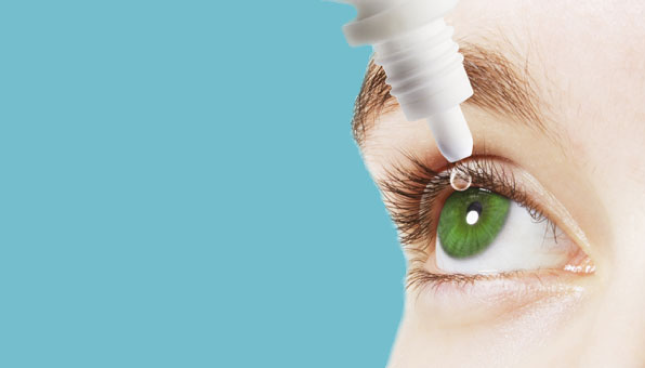Professional Glaucoma Service Near Me: Specialized Care at Our Clinic
Exploring the State-of-the-Art Technologies Made Use Of for Dealing With and diagnosing Eye Conditions
In the world of ophthalmology, the advancement of innovation has significantly boosted the devices available for diagnosing and dealing with different eye conditions. From innovative imaging modern technologies that provide detailed understandings into eye structures to robotic-assisted surgical procedures that offer unparalleled accuracy, the landscape of eye care is frequently progressing. With the integration of fabricated knowledge in diagnostics, gene treatment advancements, and virtual truth rehabilitation, the opportunities for improving individual outcomes are expanding at a quick pace. The merging of these cutting-edge modern technologies holds the promise of reinventing the field of ophthalmology, using brand-new opportunities for personalized and reliable treatments.

Advanced Imaging Technologies
Advanced Imaging Technologies have reinvented the area of ophthalmology by offering accurate and in-depth visualization of the eye frameworks. This non-invasive technique aids in the early discovery and surveillance of various eye conditions such as macular degeneration, diabetic retinopathy, and glaucoma.
Moreover, Fundus Digital photography is an additional essential tool in sensory imaging. This method entails recording detailed photos of the back of the eye, consisting of the retina and optic disc. Fundus Photography assists in documenting the progression of eye illness, examining therapy efficiency, and enlightening people about their eye health.

Robotic-Assisted Operation
Robotic-assisted surgical procedures have substantially progressed the capacities of ocular surgery, ushering in a new age of precision and effectiveness in dealing with different eye problems. By incorporating robot innovation right into medical treatments, ophthalmologists can accomplish unparalleled accuracy and control, bring about boosted person end results.
Among the key advantages of robotic-assisted surgical treatment in ophthalmology is the improved dexterity and stability it offers to cosmetic surgeons. The robotic arms can perform precise movements with a high level of precision, permitting delicate procedures with marginal invasiveness. This degree of precision is particularly useful in surgical treatments involving the retina, where even small errors can have significant implications for a person's vision.
Moreover, robotic-assisted surgical systems provide real-time imaging and responses to the specialist, allowing them to make educated decisions throughout the procedure. This modern technology improves the cosmetic surgeon's situational recognition and permits adjustments to be made promptly, making certain ideal outcomes for the person.
Expert System in Diagnostics
With the development of cutting-edge innovations enhancing medical precision in ocular procedures, the assimilation of Artificial Intelligence in diagnostics has actually emerged as a pivotal growth transforming the area of eye care. Expert System (AI) formulas are being increasingly used to analyze complicated information from imaging Full Report innovations like optical comprehensibility tomography (OCT) and fundus digital photography to assist in the early discovery and accurate diagnosis of numerous eye conditions. These AI systems can effectively recognize patterns and abnormalities in photos that may not be noticeable to the human eye, making it possible for quicker diagnosis and therapy planning.
AI algorithms can likewise anticipate condition development, recommend personalized treatment plans, and analyze the efficiency of treatments. By streamlining the diagnostic process, AI not only enhances the effectiveness of eye care professionals but likewise enhances individual results by making it possible for prompt treatments. As AI remains to breakthrough, its duty in diagnostics is anticipated to increase, supplying brand-new possibilities for early intervention and personalized treatment in the area of ophthalmology.
Genetics Treatment Advancements
In the realm of sensory developments, recent strides in gene treatment innovations have triggered substantial passion among researchers and healthcare specialists from this source alike. Genetics therapy holds immense promise in revolutionizing the therapy of different eye conditions by targeting the underlying hereditary causes. By introducing hereditary product into cells to make up for uncommon genes or to provide an absent genetics, gene treatment offers a personalized strategy to dealing with inherited eye problems such as retinitis pigmentosa, Leber hereditary amaurosis, and others that were previously taken into consideration untreatable.

As research in genetics treatment continues to advancement, the potential for customized therapies for a larger series of eye problems expands, providing new wish for individuals with genetic eye diseases.
Digital Reality Rehab
Virtual fact recovery has become a sophisticated technique in improving the recovery and rehab processes for individuals with various visual impairments. glaucoma service near me. By mimicing real-world settings via immersive technology, digital reality uses a distinct platform for vision therapy and recovery. This ingenious approach allows people to engage in interactive workouts and activities made to improve aesthetic acuity, deepness assumption, eye sychronisation, and total visual performance
One key advantage of digital reality rehab is its ability to personalize therapy programs based on the certain demands and capabilities of each patient. With real-time responses and monitoring, health care specialists can track progress, change treatments, and provide individualized like optimize results. In addition, online fact technology can produce a secure and regulated area for people to exercise aesthetic jobs, overcome difficulties, and develop self-confidence in a digital setting before transitioning to real-world scenarios.
Final Thought
Finally, the developments in imaging innovations, robotic-assisted surgical treatments, synthetic knowledge diagnostics, gene treatment developments, and online truth recovery have significantly improved the diagnosis and therapy of eye conditions. hearing service near me. These state-of-the-art modern technologies have actually changed the area of ophthalmology, permitting even more precise and effective procedures. As innovation remains to progress, the future of eye care looks promising with the capacity for even more ingenious remedies to boost patient end results
In the realm of ophthalmology, the development of innovation has considerably improved the tools readily available for diagnosing and dealing with numerous eye conditions. Fundus Digital photography helps in recording the development of eye illness, helpful site assessing treatment effectiveness, and informing patients concerning their eye wellness.
Synthetic Intelligence (AI) formulas are being progressively utilized to assess complicated data from imaging modern technologies like optical coherence tomography (OCT) and fundus photography to assist in the very early detection and exact diagnosis of various eye problems.In conclusion, the innovations in imaging innovations, robotic-assisted surgeries, man-made intelligence diagnostics, genetics therapy advancements, and virtual fact rehabilitation have dramatically enhanced the medical diagnosis and treatment of eye problems. As technology proceeds to evolve, the future of eye care looks encouraging with the potential for also more innovative options to boost client end results.